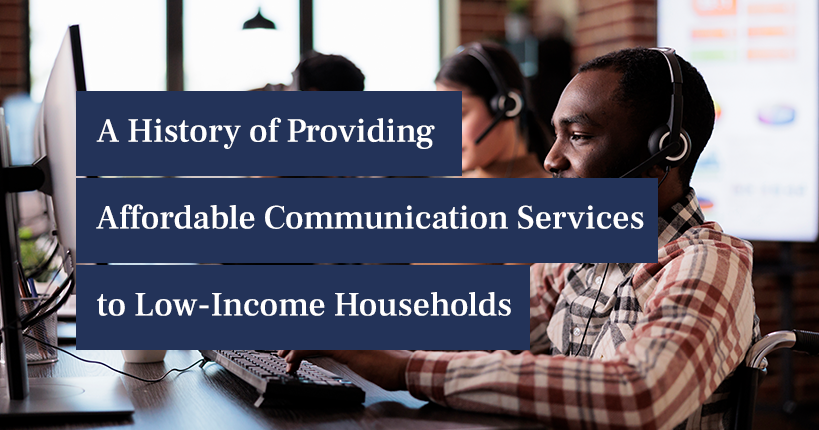The FCC’s Lifeline program was established in 1985 with the goal of providing affordable telephone service to low-income households. At the time, access to telephone service was seen as essential for participating in the modern economy and staying connected to the world, but many low-income households were unable to afford the cost of service.
In the nearly four decades since its inception, the Lifeline program has undergone numerous changes and advancements in response to the changing needs and technological landscape of the telecommunications industry. Here’s a look at the history, advancements, and achievements of the Lifeline program.
The Origins of the Lifeline Program
The Lifeline program was established as part of the Telecommunications Act of 1996, which sought to deregulate the telecommunications industry and promote competition. The Act recognized that access to telephone service was essential for participating in the modern economy and staying connected to the world, and that low-income households were disproportionately affected by the cost of service.
In response, the Lifeline program was created to provide a discount on monthly telephone service to eligible low-income households. The program was initially funded by a small surcharge on all telephone bills, and the discounts were provided directly to eligible households by participating telephone companies.
Advancements in the Lifeline Program
Over the years, the Lifeline program has undergone numerous changes and advancements in response to the changing needs and technological landscape of the telecommunications industry.
One major advancement came in 2005, when the Lifeline program was expanded to include wireless service. This was a significant development, as mobile phones had become an increasingly important means of communication, particularly for low-income households.
In 2012, the Lifeline program underwent a major overhaul as part of the FCC’s efforts to reform the program and reduce waste, fraud, and abuse. The reforms included stricter eligibility rules, a budget cap, and a national verification system to ensure that only eligible households were receiving Lifeline discounts.
Another major advancement came in 2016, when the Lifeline program was expanded to include broadband service. This was a recognition of the growing importance of broadband access in today’s digital age, and the need to ensure that low-income households had access to this essential service.
Achievements of the Lifeline Program
Since its inception, the Lifeline program has helped millions of low-income households afford telephone and broadband service. Here are just a few of the achievements of the program:
- The Lifeline program has provided discounts to over 10 million low-income households on their monthly telephone and broadband bills.
- The program has helped bridge the digital divide by providing low-income households with access to essential communication services.
- The program has been successful in reducing the number of disconnected households in low-income communities, helping to ensure that these communities are not left behind in the digital age.
- The program has been successful in increasing the adoption and use of broadband among low-income households, which can have a positive impact on education, employment, and overall quality of life.
Conclusion
In conclusion, the FCC’s Lifeline program has come a long way since its inception in 1985. From providing affordable telephone service to low-income households to expanding to include wireless and broadband service, the program has continuously adapted to the changing needs and technological landscape of the telecommunications industry. Through its efforts, the Lifeline program has helped millions of low-income households afford essential communication services and bridge the digital divide.


